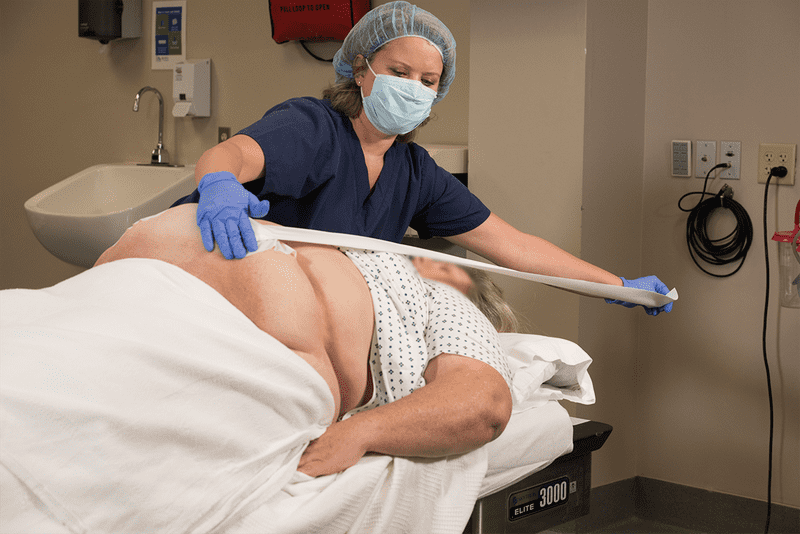A safe solution to effectively manipulate excess tissue in high-BMI patients.
According to the Centers for Disease Control and Prevention (CDC), 1 in 3 individuals in the U.S. is obese based on Body Mass Index (BMI) data. For adults 18–65 years of age, a BMI of 18.5–24.9 is considered normal, a BMI of 25–29.9 indicates the person is overweight, and a BMI of 30 or more is deemed obese. Considering the prevalence of the obesity epidemic, it’s no surprise that this BMI shift has begun to affect treatment inside the cath lab.
A high BMI can have a significant impact on medical imaging as well as surgical and invasive procedures. For example, it might increase the radiation required to image a select area adequately or prevent imaging altogether. Also, while BMI is a good indicator of body fat, it does not provide a clear picture of the fat location and distribution. An obese person may have an equal distribution of fat throughout the body or a very high distribution of skin, tissue, and fat at the bottom of the abdomen, causing a stomach apron called a “pannus.” A localized fat distribution like a pannus can make it more difficult to properly position the patient to gain access to the femoral artery. It can also impact achieving post-procedure hemostasis.
Securing excess tissue and fat in a manner that is comfortable and provides skin integrity for the patient is essential for surgical and procedural success. Currently, most facilities utilize tape to temporarily secure the tissue and fat away from the target area. Tape can be difficult to secure to the skin and can also promote the chance of damage to the skin, which increases the potential for infection. Our Pannus Retention System (PRS) is a safer, more comfortable option. It utilizes a hook, loop/ pad, and strap system designed to effectively manipulate excess tissue in high-BMI patients.
The PRS has advanced adhesive pads, eliminating the residue often left behind by regular medical tape. It’s also fully adjustable and designed for easy application, with the benefit of reducing the risk of skin tears and improving patient care. To learn more about the PRS, which is available in several variations designed to address the specific needs of different surgical procedures, visit TZMedical.com.
–Dan Scharbach
INDEPENDENT HEALTH CARE CONSULTANT AND PAST PROVIDENCE HEALTH SYSTEM REGIONAL DIRECTOR
